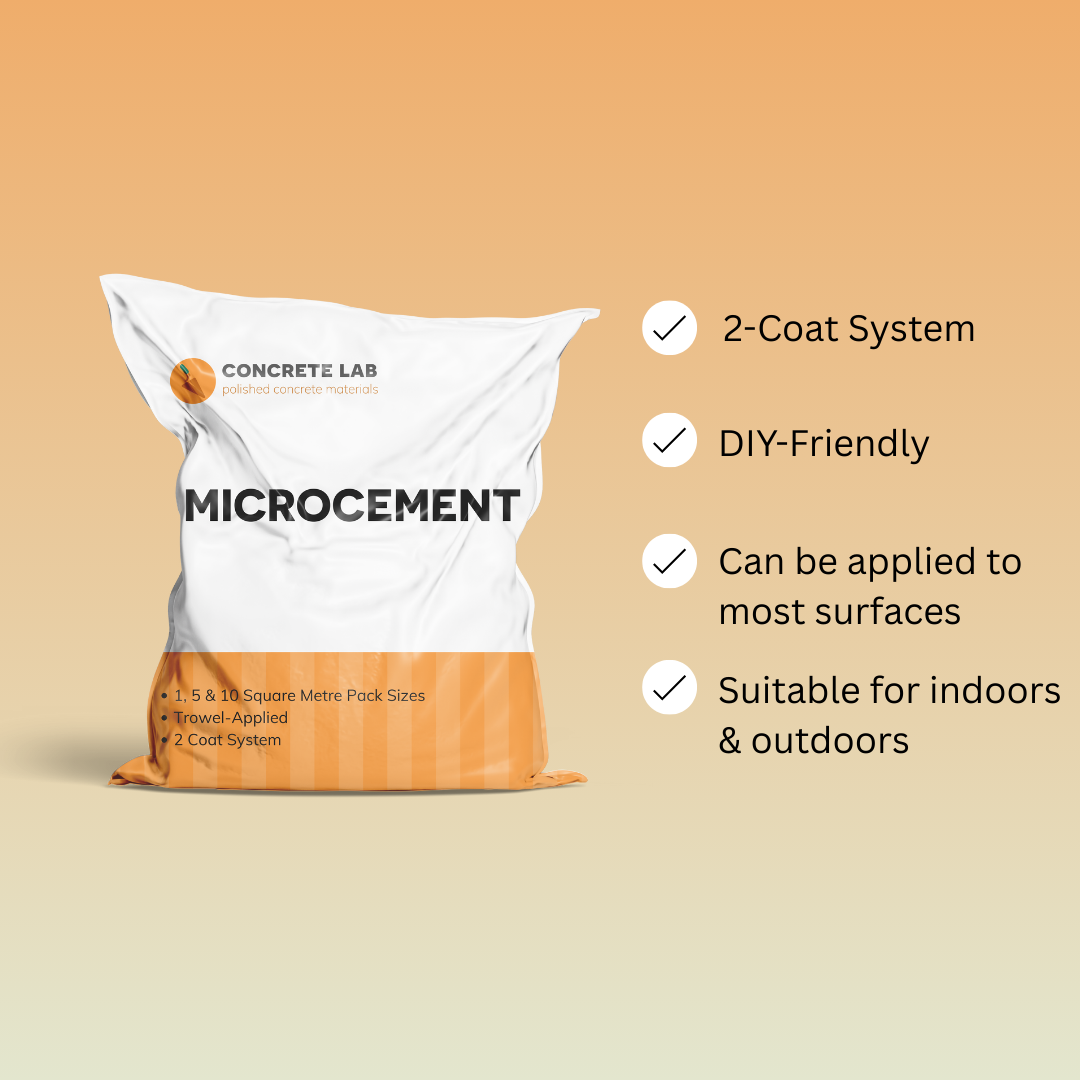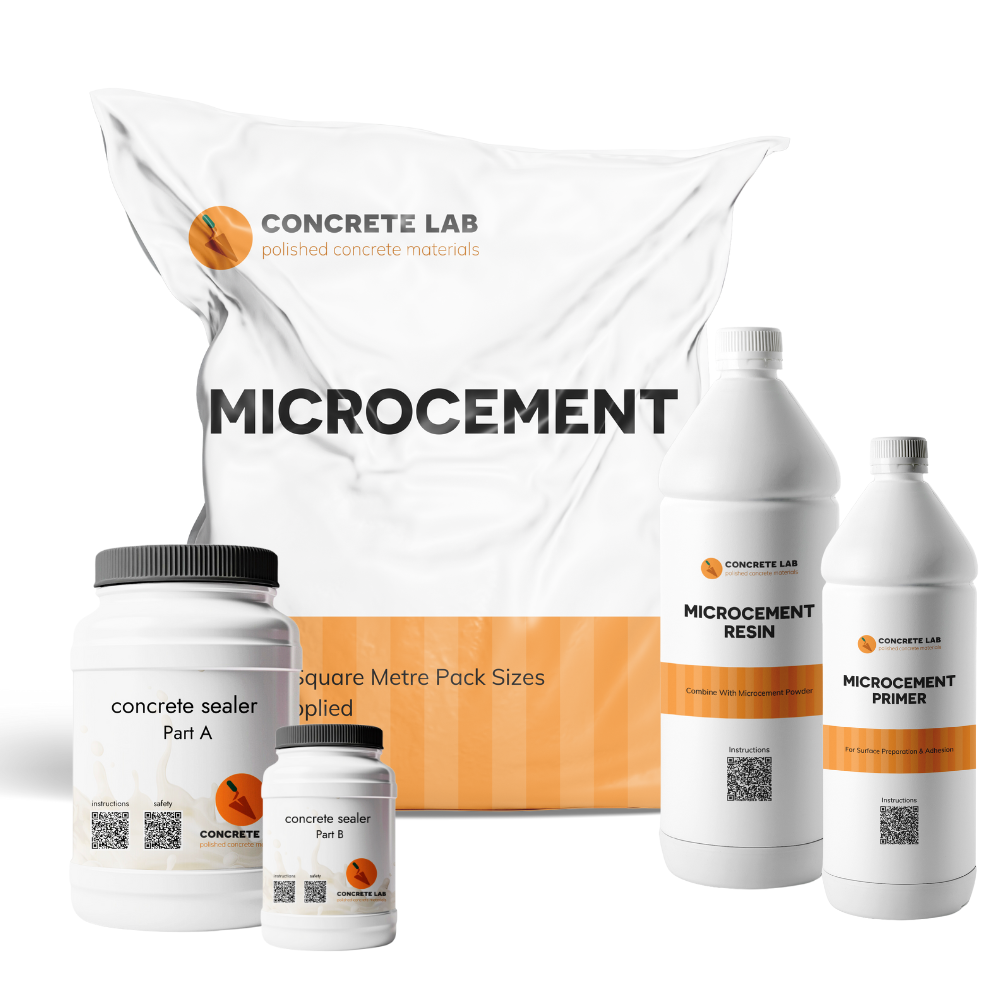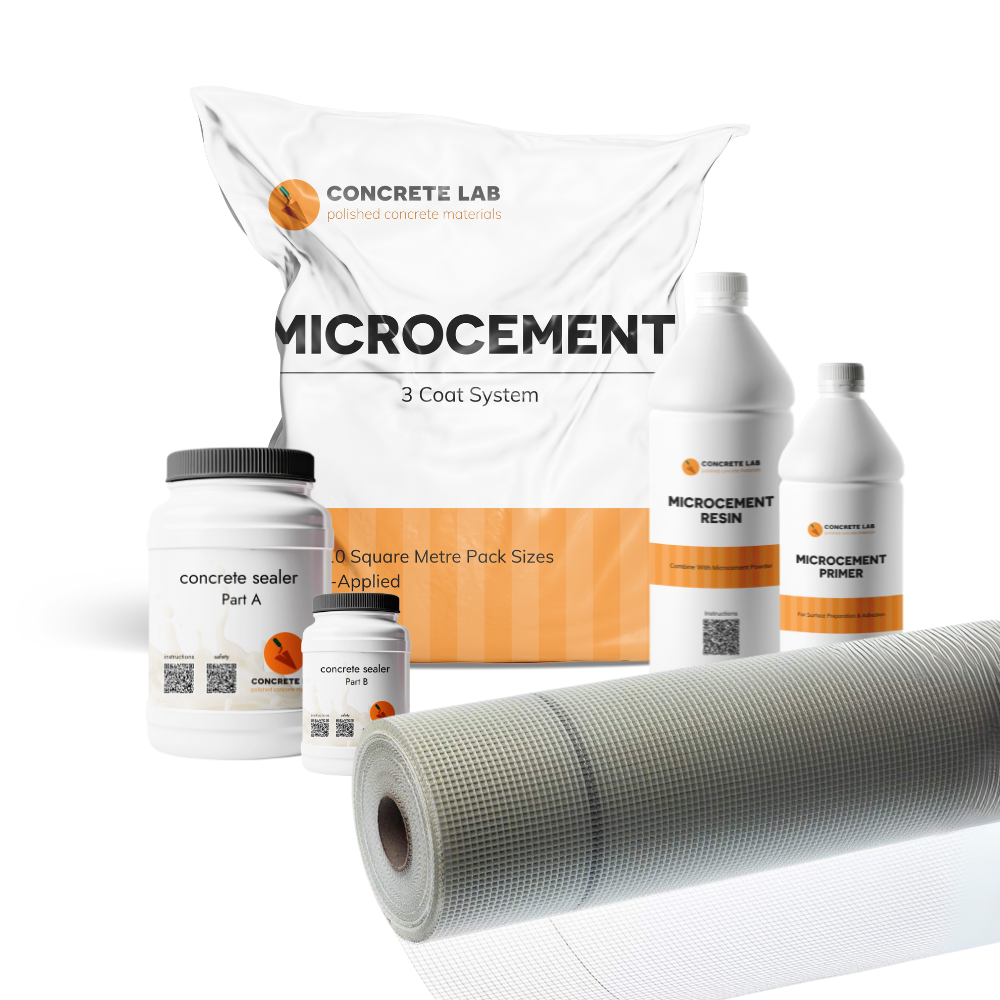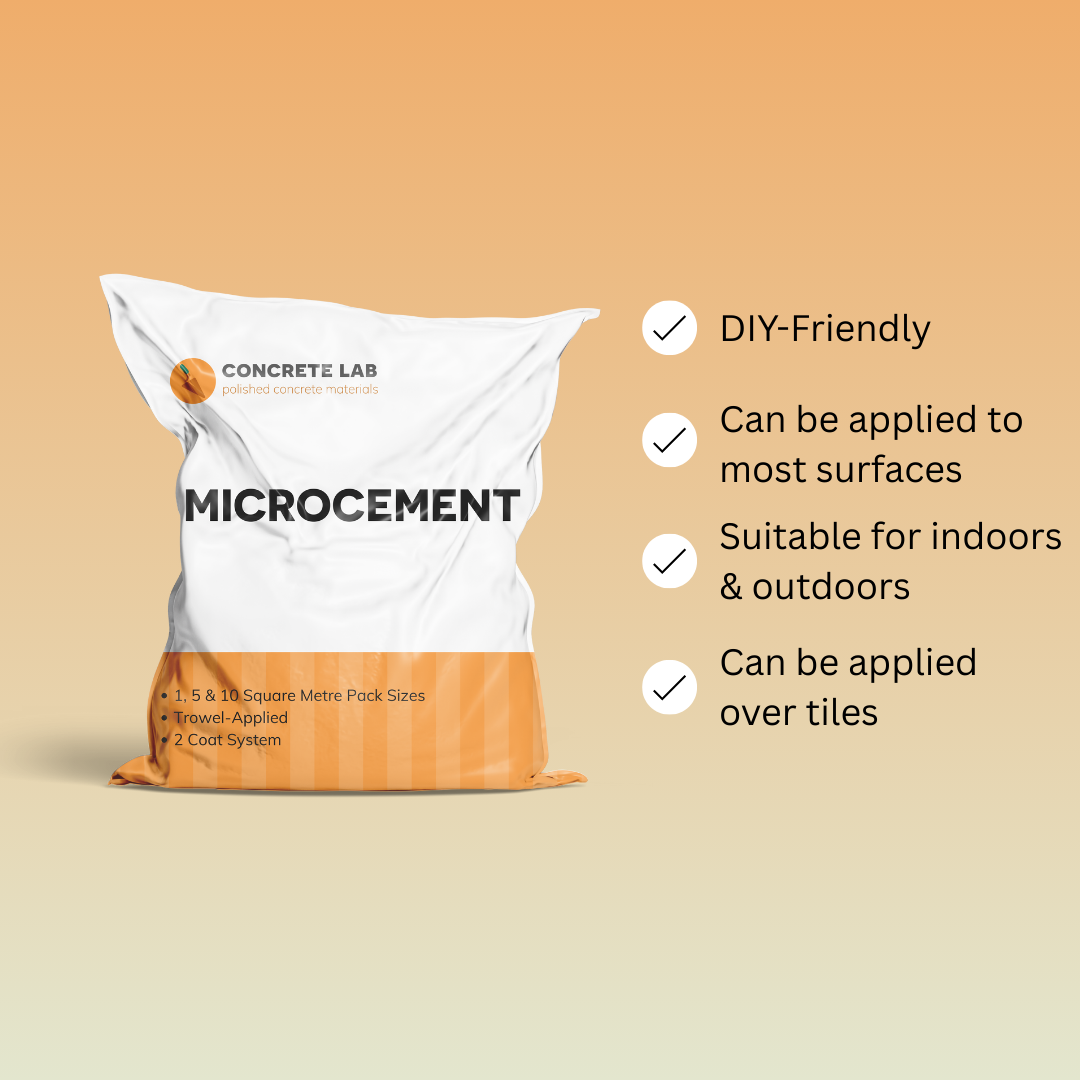Polished concrete is stunning
At Concrete Lab, we design concrete systems for every kind of project.
Cast-In-Place is for solid, structural worktops and poured slabs.
GFRC is for handcrafted precast pieces with strength and detail.
Microcement is for everything in between — the same concrete feel, applied thinly, directly over existing surfaces.
Here’s why Microcement works so well.

1. It Brings the Concrete Look to Any Space
Polished concrete is stunning — but not every floor or wall can take the weight or depth.
Microcement gives you the same aesthetic in just 1–2mm of material.
It bonds to tiles, plaster, timber, even furniture.
That means no demolition, no skips, no disruption — just design freedom.

2. It’s Part of a Proven Concrete System
This isn’t a decorative paint. It’s a full engineered surface system from Concrete Lab — built on the same expertise as our Cast-In-Place and GFRC ranges.
Each kit includes primers, fibre mesh, coatings, and sealers designed to work together for strength, flexibility, and durability.

3. It’s Seamless, Hygienic, and Waterproof
Bathrooms, kitchens, wetrooms — Microcement handles them all.
Once sealed, it’s water-resistant, mould-resistant, and easy to clean.
No grout lines. No cracks. No joints to fail.

4. It’s Lightweight Yet Tough
At around 1.5mm thick, Microcement barely adds weight but still delivers a solid, tactile surface.
It’s strong enough for everyday use on floors and worktops, with the flexibility to move with your substrate.
Perfect for retrofits, renovations, and design upgrades.

5. It’s Designer-Grade Without the Build Site
Microcement gives you that architectural concrete finish without a structural pour.
You can install it yourself with our detailed guides — or pass it to a tradesperson for a fast, dust-free transformation.
It’s the modern concrete look made achievable.

6. It Complements the Rest of the Concrete Lab Range
Where our Cast-In-Place Mix builds solid worktops and GFRC Worktop Mix shapes fine detail, Microcement extends the same design language across walls, floors, and interiors.
All our systems share one goal — to make real concrete finishes accessible, durable, and beautiful.

Featured product
One of our popular kits





























Our Microcement Kits
Have Questions?
We Have Answers.
Get quick answers to your microcement questions.
Can I apply Microcement over tiles?
Yes — that’s exactly what it’s designed for.
Our Wall Tile Kit includes primer, fibre mesh, and coatings that bond directly to ceramic or porcelain tiles, bridging grout lines for a perfectly smooth finish.
You don’t need to rip anything out — just clean, prime, and start.
Pro Tip: If your tiles are glossy, a quick sand or degrease before priming gives maximum grip.
Is Microcement waterproof?
Once sealed, yes — fully water-proof and perfect for bathrooms, wetrooms, and splash zones.
The Concrete Lab Sealer locks out moisture while keeping the natural matte or satin concrete look.
Note: Always apply the full sealer system (three coats minimum) for proper protection in high-moisture areas.
Can I use it on floors and walls?
Absolutely.
Microcement is designed for both horizontal and vertical surfaces — from floors, walls, and stairs to countertops and furniture.
Just choose the correct kit type:Floor,Wall,Wall Tile, orWorktop— each includes the right mix and tools for your project.
How durable is it?
Very.
Microcement cures into a hard, flexible surface that resists scuffs, stains, and impact.
When sealed, it’s tough enough for kitchens, hallways, and bathrooms — while staying easy to maintain with neutral cleaners.
Maintenance: A light reseal every few years keeps it looking brand new.
Do I need special tools or training?
No.
Each kit comes with everything you need plus a step-by-step guide.
Most DIYers complete their first Microcement project in a weekend using standard trowels, rollers, and mixing tools.
Optional: Professionals can achieve different finishes (smooth, cloudy, textured) — all with the same kit.
What’s the difference between Microcement, Cast-In-Place, and GFRC?
They’re all part of the Concrete Lab system, each designed for a different type of project — but built on the same foundation of craftsmanship and performance.
Microcement is the lightweight option, perfect for creating thin, seamless finishes on walls, floors, and furniture. It’s ideal for retrofits and interior design upgrades where you want that polished concrete look without demolition or added weight.
Cast-In-Place is for poured worktops and structural slabs — the real, monolithic concrete surface that becomes part of the building itself. It’s strong, permanent, and delivers that authentic, solid feel only concrete can.
GFRC, or Glass Fibre Reinforced Concrete, is made for precision and versatility. It’s used to create bespoke sinks, tables, and custom pieces where you want the same concrete aesthetic with far less weight and more fine detail.
Together, these three systems form the Concrete Lab range — each one engineered for a specific purpose, all sharing the same design DNA: modern concrete finishes, built to last.
How long does it take?
Most projects take 2–3 days from start to finish, including drying time between coats.
You can walk on or use sealed surfaces after 48 hours, with full cure achieved in about a week.
What colours are available?
Microcement comes in a range of colours
You can also order an Colour Samples to test finishes before you buy.
Can I use it outdoors?
Yes — when sealed and protected from standing water, Microcement performs beautifully on exterior worktops, walls, planters etc.
We have an outdoor kit especially for this.
What if I need help during my project?
Our support team is based in the UK and experienced in every Concrete Lab system.
We’ll help with planning, coverage estimates, or troubleshooting — before, during, and after your project.


















